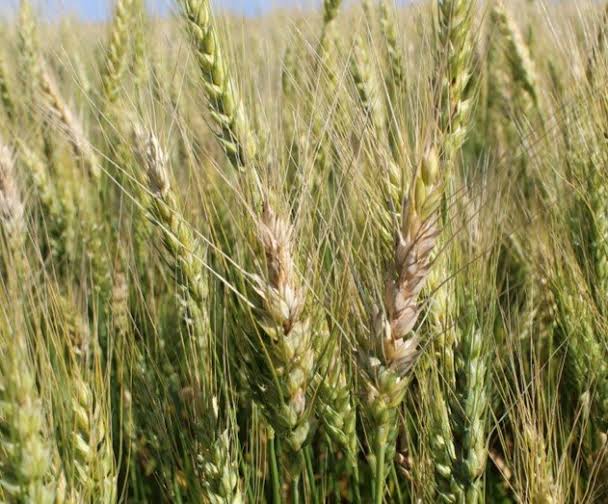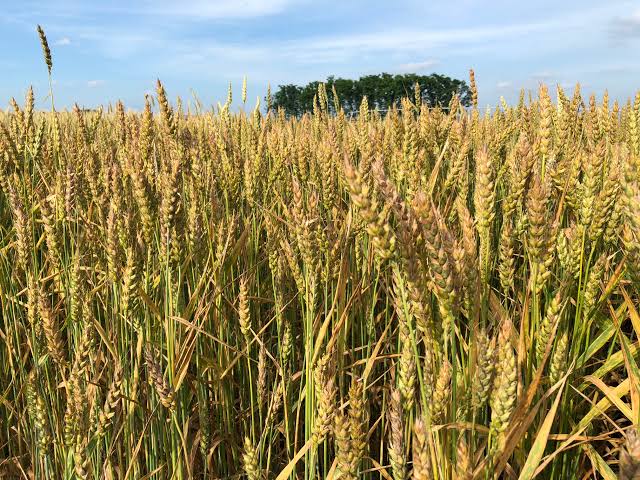Barley, a versatile cereal grain cherished for its use in various food products, faces an array of challenges from pests, diseases, and other adversaries that can impede its growth. Farmers engaging in barley cultivation must be attuned to these threats to devise effective strategies for crop protection.
Insects represent a persistent menace to barley crops. Aphids, tiny sap-sucking insects, are known to inflict harm by depriving the plant of essential fluids, leading to stunted growth. The cereal leaf beetle, another unwelcome visitor, feasts upon barley leaves, hindering the plant’s ability to photosynthesize. Wireworms, the larval form of click beetles, pose a threat by feeding on barley roots, disrupting the plant’s foundation.
Diseases, both fungal and bacterial, further compound the challenges faced by barley cultivators. Powdery mildew, a fungal infection recognizable by its white powdery residue on leaves, interferes with the plant’s ability to harness sunlight. Blight, caused by bacteria or fungi, manifests as browning and withering of plant tissues, jeopardizing the overall health of the crop.
Viruses also cast a shadow over barley fields. Barley yellow dwarf virus, transmitted through aphids, manifests in symptoms like discoloration, stunted growth, and diminished grain quality. Barley stripe mosaic virus is another viral adversary that negatively impacts the leaves and overall vitality of the barley plant.
Nematodes, microscopic worms, bring another dimension of concern. Root lesion nematodes, in particular, create lesions on barley roots, disrupting the plant’s capacity to absorb nutrients and water. This interference compromises the crop’s resilience and can result in diminished yields.
To address these challenges, farmers employ Integrated Pest Management (IPM) strategies. These may include planting barley varieties resistant to specific pests or diseases, adopting crop rotation practices, and introducing beneficial insects to naturally control pest populations. Additionally, judicious use of fungicides and insecticides becomes necessary in severe cases, with an emphasis on minimizing environmental impact.
Crop rotation emerges as a sustainable practice, disrupting the life cycles of pests and diseases and fostering soil health. By alternating barley with different crops, farmers create an environment less conducive to the proliferation of specific threats.
However, the intricate dance between barley cultivation and the challenges posed by pests, diseases, and other adversaries requires careful consideration and proactive management. Farmers must remain vigilant, adopting a holistic approach to protect their barley crops and ensure a bountiful harvest.
Read Also: Different Materials used for building Snail Houses
What are the Common Pests and Diseases of Barley

Barley cultivation faces various challenges from pests and diseases, impacting the health and yield of this important cereal grain. Some common adversaries include:
1. Pests:
Aphids: These tiny insects feed on barley sap, leading to stunted growth and reduced vitality.
Cereal Leaf Beetle: Known for devouring barley leaves, this beetle can hinder the plant’s ability to photosynthesize.
Wireworms: The larval form of click beetles, wireworms can cause damage by feeding on barley roots, affecting the plant’s foundation.
2. Diseases:
Powdery Mildew: A fungal infection characterized by a white powdery substance on leaves, impacting the plant’s photosynthesis.
Blight: Caused by bacteria or fungi, blight results in browning and withering of plant tissues, affecting overall crop health.
3. Viruses:
Barley Yellow Dwarf Virus: Transmitted by aphids, this virus causes discoloration, stunting, and reduced grain quality.
Barley Stripe Mosaic Virus: A viral threat that affects the leaves and overall health of the barley plant.
4. Nematodes:
Root Lesion Nematodes: Microscopic worms causing lesions on barley roots, disrupting nutrient and water upt
These pests and diseases can have detrimental effects on barley crops, necessitating proactive management strategies such as Integrated Pest Management (IPM), crop rotation, and the careful use of fungicides and insecticides to ensure a healthy and productive harvest.
Dealing with these common pests and diseases is crucial for barley cultivators to secure a successful harvest.
Farmers employ IPM strategies to minimize the impact of pests and diseases. This holistic approach involves using a combination of cultural, biological, and chemical control methods. For example, introducing natural predators or parasites of pests, adjusting planting times, and selecting resistant barley varieties are integral components of IPM.
In cases of severe infestation, farmers may resort to the targeted use of fungicides and insecticides. Careful application is vital to prevent unintended harm to beneficial organisms and minimize environmental impact. Regular monitoring of the crop’s health allows for timely interventions, maintaining the delicate balance between pest control and ecological sustainability.
Barley cultivators often adopt a practice of crop rotation to disrupt the life cycles of pests and diseases. By alternating barley with other crops, the specific threats to barley are less likely to persist in the soil, reducing the risk of infestations and diseases over consecutive growing seasons.
Selecting and planting barley varieties with inherent resistance to specific pests or diseases can be an effective preventive measure. Breeding programs focus on developing barley cultivars with traits that make them less susceptible to prevalent threats, offering a sustainable solution to mitigate the impact of pests and diseases.
Regular scouting and monitoring of barley fields are essential components of pest and disease management. Early detection allows for prompt action, minimizing the potential damage to the crop. Farmers observe changes in plant appearance, growth patterns, and signs of infestation to make informed decisions about the necessity and timing of interventions.
However, a comprehensive approach to managing pests and diseases in barley cultivation involves a combination of preventive measures and responsive actions. By integrating various strategies, farmers can foster a healthy barley crop, ensuring a robust harvest and contributing to the sustainability of barley agriculture.
Read Also: Impact of Soil Characteristics on Snails
How to Control the Common Pest and Diseases of Barley: Step-by-Step Guide

Controlling common pests and diseases in barley involves a systematic approach. Here’s a step-by-step guide:
Step 1: Identify the Pests and Diseases; Regularly inspect your barley crop for signs of pests and diseases. Look for aphids, cereal leaf beetles, wireworms, powdery mildew, blight, and viral symptoms. Early identification is crucial for effective control.
Step 2: Implement Integrated Pest Management (IPM); Embrace IPM practices, combining cultural, biological, and chemical control methods. Introduce natural predators, adjust planting times, and use resistant barley varieties. IPM fosters a balanced ecosystem, minimizing the need for chemical interventions.
Step 3: Utilize Resistant Barley Varieties; Select and plant barley varieties with inherent resistance to common pests and diseases. Work with agricultural extension services or seed suppliers to choose cultivars that thrive in your specific region and offer built-in protection against prevalent threats.
Step 4: Monitor and Scout Regularly; Establish a routine for field scouting. Regularly monitor barley fields for any signs of infestation or disease development. Early detection enables timely intervention, preventing the escalation of problems and minimizing crop damage.
Step 5: Crop Rotation; Incorporate crop rotation into your farming practices. Alternating barley with other crops disrupts the life cycles of pests and diseases, reducing their persistence in the soil. This sustainable approach helps maintain soil health and mitigates the risk of continuous infestations.
Step 6: Fungicides and Insecticides; If pest or disease levels surpass acceptable thresholds, consider using targeted fungicides or insecticides. Apply these chemicals judiciously, following recommended guidelines and considering their potential impact on beneficial organisms and the environment. Timing is critical for maximum effectiveness.
Step 7: Environmental Management; Create a conducive environment for barley growth. Ensure proper irrigation, nutrient levels, and optimal planting density. A healthy and vigorous crop is more resilient to pest and disease pressures.
Step 8: Practice Good Agricultural Practices (GAP); Adopt GAP principles, including proper sanitation practices. Remove and destroy infected plant material to prevent the spread of diseases. Keep the barley field clean and free from potential breeding grounds for pests.
Step 9: Seek Professional Advice; Consult with agricultural experts, extension services, or local agronomists for tailored advice. They can provide insights into specific challenges in your region and recommend appropriate control measures based on the latest research and developments.
Step 10: Recordkeeping; Maintain detailed records of pest and disease occurrences, control measures applied, and their outcomes. This information helps in assessing the effectiveness of your strategies and informs decision-making for future plantings.
